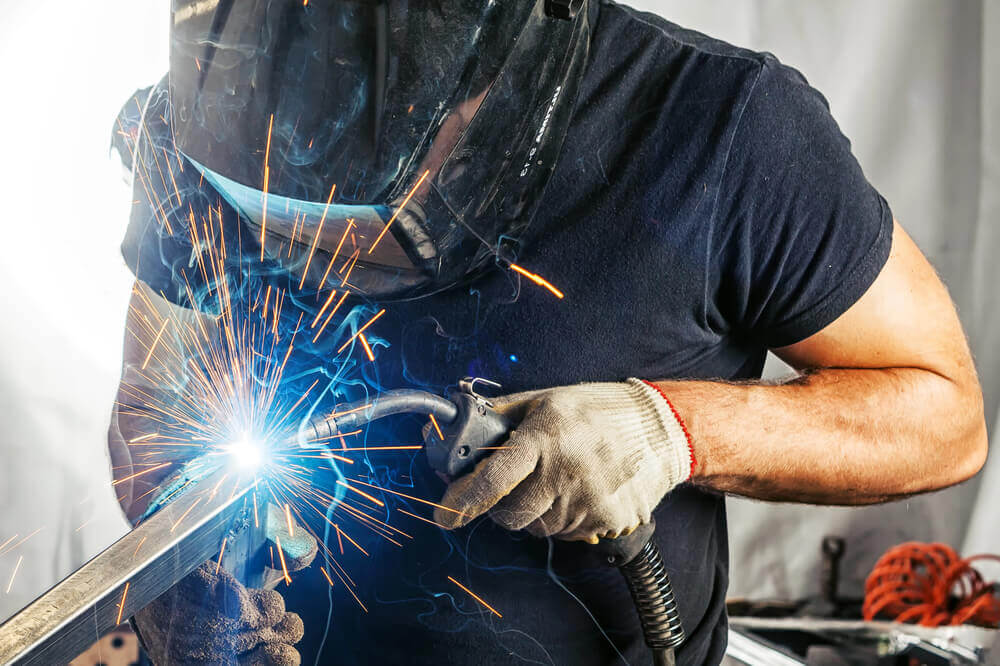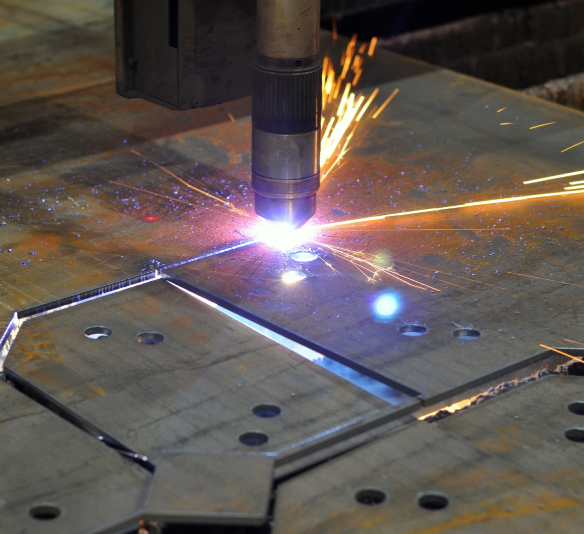Laser welding is a sophisticated technique that has revolutionized the way industries approach the joining of materials. As a leading provider of advanced manufacturing solutions, XCEL Laser integrates this technology to enhance the precision and efficiency of production processes. So, how does laser welding work? Let us explore the fundamental concepts of laser welding, highlighting how it operates and why it is increasingly favored in high-tech industries.

The Fundamentals of Laser Welding
At its core, laser welding uses a highly concentrated laser beam to fuse materials together. This process involves directing a laser beam at a small point on the workpiece. The intense energy of the laser heats the material, causing it to melt and form a weld pool. This molten pool then cools and solidifies to create a strong, durable weld.
Laser welding is distinct from traditional welding because it can be highly precise, providing significant control over the heat applied to the material. This precision minimizes damage or alteration to the surrounding area, making it ideal for delicate or highly detailed work. Moreover, the process is versatile, capable of joining a variety of materials including metals, plastics, and composites.
How Does Laser Welding Work?
Understanding how laser welding works requires a look into its two primary modes: conduction limited welding and keyhole welding. These modes describe how the laser interacts with the material being welded, affecting the efficiency and quality of the weld.
- Conduction Limited Welding
In conduction-limited welding, the laser beam heats the surface of the material until it melts, but the heat is not intense enough to penetrate deeply. The power density of the laser in this mode is typically less than 10^5 watts per square centimeter. As a result, the welds formed are wider and shallower, characterized by a high width-to-depth ratio. This mode is suitable for welding thinner materials or when deep penetration is not necessary.
- Keyhole Welding
As the laser moves along the joint, the keyhole also traverses, allowing the molten walls of the keyhole to flow and solidify behind it, forming a weld that is significantly deeper than it is wide. This results in a joint with a high depth-to-width ratio, ideal for thick or heavy-duty components.
XCEL Laser’s Application of Laser Welding
At XCEL Laser, our expertise extends beyond supplying laser welding machines. We are daily users of the technologies we advocate, applying laser welding in the manufacturing processes of our parent company, MFR Manufacturing Corp. This hands-on experience ensures that the equipment we provide is not only advanced but also rigorously tested and proven in real-world manufacturing settings.
Our approach to laser welding focuses on optimizing production efficiency while ensuring the highest standards of quality. By integrating laser welding technologies into our processes, we have been able to achieve faster production times, reduce material waste, and enhance the overall quality of the final products. Whether for laser cutting intricate designs or implementing laser cleaning for maintenance, laser technology offers comprehensive solutions that go beyond traditional methods.
Technical Advantages of Laser Welding
Laser welding is not just about fusing materials; it is about doing so with a level of precision and efficiency that other welding methods cannot match. Here are several technical advantages that make laser welding stand out:
- Precision and Accuracy
One of the most significant benefits of laser welding is its precision. The laser beam can be focused to a pinpoint, allowing for extremely accurate welds. This is crucial in industries where the smallest error can lead to significant problems, such as in aerospace or medical device manufacturing.
The ability to precisely control the weld’s location, depth, and amount of heat input minimizes the risk of damaging sensitive components, ensuring that even the most delicate parts are joined flawlessly.
- Speed and Efficiency
Laser welding is considerably faster than traditional welding techniques. This speed is not just about moving quickly along a joint line; it is also about reducing the overall time a part spends in the production cycle. For manufacturers, this means increased throughput and the ability to meet tight production schedules without compromising quality.

The efficiency of laser welding also translates into reduced labor costs and lower energy consumption, making it a cost-effective option for many businesses.
- Versatility Across Materials
The versatility of laser welding is another of its standout features. It can be effectively used on a variety of materials, including metals, plastics, and composites. This capability is enhanced by the different types of laser sources available, such as fiber lasers for metals and CO2 lasers for non-metals. Each laser type has specific advantages that can be matched to the needs of the material and application, providing flexibility across diverse manufacturing requirements.
- Minimal Heat Affected Zone (HAZ)
Laser welding is highly localized, focusing heat only where it is needed. This results in a minimal heat-affected zone (HAZ), reducing the chances of material distortion or weakening. For industries that require the structural integrity of components to be maintained post-welding, this feature is invaluable. It allows for the production of complex, high-strength assemblies without compromising their mechanical properties.
Broad Applications of Laser Welding Across Industries
Laser welding’s technical benefits translate into a wide array of practical applications, making it a transformative technology across multiple industries. Each sector utilizes laser welding to overcome unique challenges, enhance product quality, and streamline production processes. Here is how this technology is applied in three key industries: automotive, electronics, and aerospace.
- Automotive Industry
In the automotive sector, the demand for lightweight yet strong components is ever-increasing, driven by the need for fuel efficiency and reduced emissions. Laser welding meets these demands by enabling the production of lightweight metal assemblies that maintain high strength and durability.
In car manufacturing, laser welding is used to join thin-walled parts of aluminum and high-strength steels, materials that are notoriously difficult to weld with traditional methods due to their sensitivity to heat. The precision and rapid processing capabilities of laser welding allow automotive manufacturers to improve production rates and reduce material waste, resulting in more cost-effective manufacturing cycles.
- Electronics Manufacturing
The electronics industry benefits significantly from the precision of laser welding, especially in the fabrication of small and sensitive components. In this industry, the integrity of electrical connections is paramount. Laser welding provides a solution for creating strong, reliable connections that maintain the functionality and longevity of electronic devices.
For example, in the assembly of batteries, laser welding is used to attach thin tabs of dissimilar materials—a process crucial for the efficiency and safety of battery cells. The ability to precisely control the laser’s energy output ensures that the surrounding materials are not damaged by excessive heat, which is critical in the miniaturized environments of electronic devices.
- Aerospace Applications
The aerospace industry requires components that can withstand extreme conditions without failing. Here, laser welding is prized for its ability to create high-quality, precise welds that are critical for the safety and performance of aerospace components.
The technology is used in the construction of aircraft engines and structural components, where even minor defects can lead to catastrophic failures. Laser welding’s ability to produce consistent, deep-penetration welds ensures the integrity of these critical components. Moreover, the minimal heat-affected zone reduces the risk of material degradation, which is vital in materials used in the aerospace sector.
Enhancing Product Functionality and Integrity
The use of laser welding extends beyond just joining materials; it enhances the overall functionality and integrity of the products. By minimizing heat exposure and allowing for precise control over the welding process, laser welding helps maintain the original properties of the materials, ensuring that the final product performs as designed.
Additionally, the adaptability of laser welding to work with various materials and its capability to handle complex and intricate designs make it an invaluable tool in modern manufacturing.
Laser welding is not just a method of joining materials but a critical component of modern manufacturing strategies that aim to enhance efficiency, reduce costs, and improve product quality across various industries. Its precise, efficient, and versatile nature makes it indispensable in settings where quality and precision are paramount. As industries continue to evolve and demand more sophisticated manufacturing solutions, laser welding will undoubtedly play a pivotal role in shaping the future of production technology.
